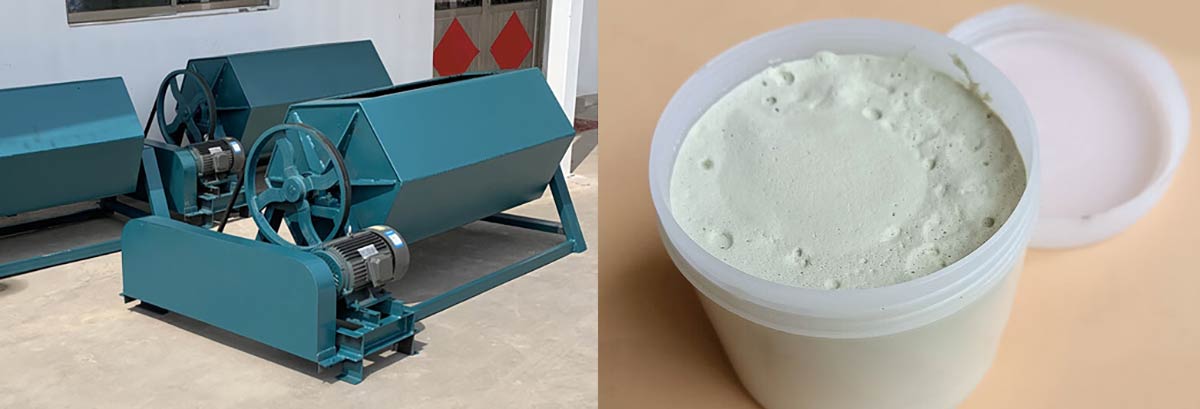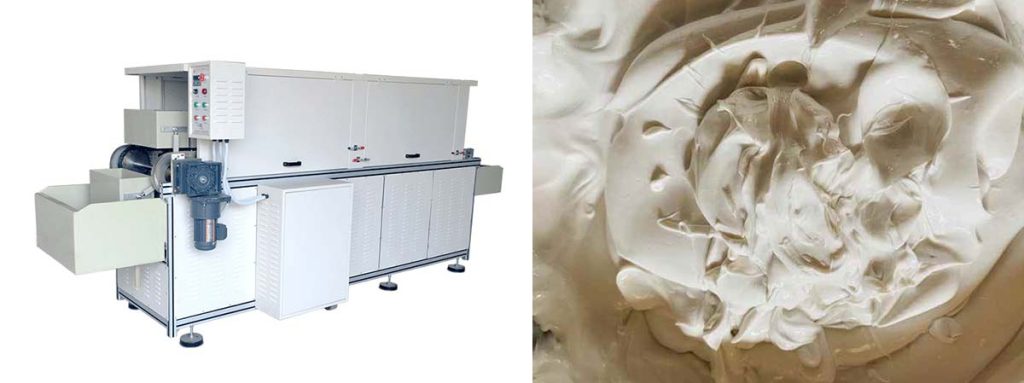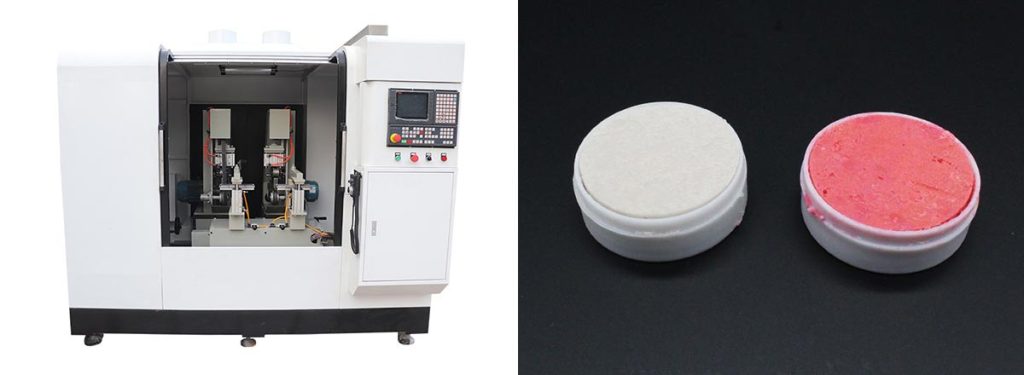

Plastic polish compound plays a vital role in restoring and maintaining molds used in manufacturing. It enhances the surface quality by smoothing imperfections and removing scratches. This process ensures molds produce flawless plastic products with consistent finishes. Regular use of this compound prevents wear and tear, keeping the mold’s surface in optimal condition. Mold texturing benefits from its application, as it refines intricate patterns and designs. By preserving the mold’s integrity, plastic polish compound contributes to efficient production and superior aesthetics.
Key Takeaways
- Plastic polish compound fixes mold surfaces by removing scratches and flaws. This helps make better plastic products.
- Using this compound often stops damage, makes molds last longer, and lowers repair costs.
- Cleaning and checking molds before polishing gives better results and helps molds work well.
- Improving mold textures with this compound makes products look nicer and work better, like having a stronger grip and lasting longer.
- Getting expert help for big mold problems ensures proper repair and keeps production running smoothly.
Understanding Plastic Polish Compound
What Is Plastic Polish Compound?
Plastic polish compound is a specialized material designed to enhance and restore the surfaces of molds used in manufacturing. It is formulated to address imperfections such as scratches, blemishes, and uneven textures on mold surfaces. By applying this compound, manufacturers can achieve a smoother surface finish, which is essential for producing high-quality plastic products. Its unique composition allows it to work effectively on various mold materials, including steel and aluminum, ensuring versatility across different industries.
This compound plays a critical role in plastic injection molding. It ensures that molds maintain their precision and functionality over time. The result is a consistent mold texture that meets both aesthetic and functional requirements. Whether used for repairing damaged molds or refining intricate mold textures, plastic polish compound is an indispensable tool in modern manufacturing.
Key Properties and Composition
The effectiveness of plastic polish compound lies in its carefully engineered properties. It typically contains fine abrasives, lubricants, and chemical agents that work together to polish and protect mold surfaces. These components are designed to remove imperfections without causing damage to the mold material. The compound’s fine abrasives smooth out rough areas, while the lubricants reduce friction during the polishing process. Chemical agents enhance the compound’s ability to clean and protect the mold surface.
Key performance metrics validate the compound’s ability to improve mold surface finishes:
- Smooth surfaces reduce sticking phenomena, ensuring easier product release.
- Textured finishes enhance grip and improve product functionality.
- High-gloss finishes increase transparency and reduce corrosion, contributing to a high-grade surface finish.
These properties make the compound suitable for a wide range of applications, from restoring worn molds to enhancing mold textures for specific design needs.
Role in Mold Repair and Surface Enhancement
Plastic polish compound serves as a cornerstone in mold repair and surface enhancement. It restores damaged molds by eliminating scratches, dents, and other surface defects. This process not only improves the mold’s appearance but also ensures its functionality. A well-maintained mold surface directly impacts the quality of the final plastic product, making this compound essential for achieving consistent results.
In addition to repair, the compound enhances mold textures to meet specific aesthetic and functional requirements. For example, manufacturers often use it to refine intricate mold textures, ensuring that the final product meets design specifications. Texturing also improves the strength and safety of plastic products, particularly in applications where grip and durability are critical.
The compound’s role extends to improving productivity in plastic injection molding. By creating smoother surfaces, it reduces release forces, allowing for faster and more efficient production cycles. This not only saves time but also minimizes wear and tear on the mold, extending its lifespan. The ability to achieve a high-grade surface finish further underscores the compound’s importance in modern manufacturing.
Applications in Mold Texturing and Repair
Restoring Surface Finishes
Restoring the surface of a mold is a critical step in ensuring the production of high-quality plastic products. Over time, molds can develop scratches, dents, and other imperfections due to repeated use. These defects compromise the surface finish of the final product, leading to inconsistencies in appearance and functionality. Plastic polish compound addresses these issues by smoothing out irregularities and restoring the mold’s original surface quality.
Statistical analyses have demonstrated the effectiveness of plastic polish compound in improving surface finishes. Techniques like the Taguchi method, combined with Minitab software, have optimized parameters such as layer thickness, nozzle flow, and print speed. These adjustments significantly reduce surface roughness, resulting in smoother and more consistent finishes. Manufacturers benefit from this process by achieving higher precision and reducing the need for frequent mold replacements.
The restoration process also enhances the mold’s durability. By eliminating surface defects, the compound minimizes stress points that could lead to further damage. This ensures that molds remain functional for longer periods, reducing downtime and maintenance costs in manufacturing operations.
Enhancing Mold Textures for Aesthetic and Functional Needs
Mold texturing plays a vital role in both the appearance and performance of plastic products. A well-defined mold texture can elevate the aesthetic appeal of a product while also serving functional purposes, such as improving grip or reducing glare. Plastic polish compound is indispensable in refining these textures to meet specific design and performance requirements.
The application of a mold texturing system ensures that intricate patterns and designs are accurately reproduced on the mold surface. This precision is crucial for industries like automotive and consumer goods, where product aesthetics significantly influence customer satisfaction. For example, a textured dashboard in a car not only enhances its visual appeal but also reduces reflections that could distract the driver.
Functionality is another key aspect of mold texturing. Textured surfaces improve the usability of products by providing better grip or reducing wear and tear. In medical devices, for instance, textured finishes can enhance safety and reliability. Plastic polish compound ensures that these textures are not only visually appealing but also durable and consistent across production runs.

Addressing Common Mold Defects
Mold defects are a common challenge in manufacturing, often resulting in wasted materials and increased production costs. Issues such as sink marks, flow lines, and surface blemishes can compromise the quality of the final product. Plastic polish compound offers an effective solution for addressing these defects, ensuring that molds produce flawless plastic components.
One of the most frequent defects is surface blemishes, which occur due to uneven mold surfaces. Polishing these areas with a plastic polish compound restores their smoothness, eliminating the root cause of the problem. Similarly, sink marks—caused by uneven cooling or material shrinkage—can be minimized by refining the mold surface to ensure uniform heat distribution.
Flow lines, another common defect, result from variations in material flow during the injection process. By enhancing the mold texture, manufacturers can reduce these inconsistencies, leading to a more uniform appearance in the final product. The use of a mold texturing system further ensures that these improvements are consistently applied across all molds.
In addition to resolving defects, plastic polish compound contributes to preventive maintenance. Regular polishing keeps molds in optimal condition, reducing the likelihood of defects occurring in the first place. This proactive approach not only improves product quality but also enhances overall manufacturing efficiency.
Techniques for Plastic Injection Mold Polishing
Step-by-Step Application Process
The plastic injection mold polishing process requires precision and attention to detail. Following a structured approach ensures optimal results and extends the mold’s lifespan. Here is a step-by-step guide:
- Clean the Mold Surface: Begin by thoroughly cleaning the mold to remove dirt, grease, or residue. This step prevents contaminants from interfering with the polishing process.
- Inspect for Defects: Examine the mold for scratches, dents, or uneven areas. Identifying these imperfections helps determine the appropriate polishing technique.
- Select the Right Polishing Compound: Choose a plastic polish compound suitable for the mold material and desired surface finish.
- Apply the Compound: Use a soft cloth or polishing tool to apply the compound evenly across the mold surface.
- Polish in Circular Motions: Work in small, circular motions to ensure even coverage and avoid creating new scratches.
- Rinse and Repeat: Rinse the mold to remove excess compound and inspect the surface. Repeat the process if necessary to achieve the desired finish.
This systematic approach ensures a smooth and consistent surface finish, enhancing the mold’s performance and durability.
Best Practices for Using a Plastic Polishing Machine
Using a plastic polishing machine can significantly improve efficiency and consistency in the mold polishing process. Adhering to best practices ensures optimal results:
- Start with the finest grit size to create a flat surface and remove sectioning effects.
- Recommended abrasive grit sizes:
- Coarse: 120-180 grit for rough surfaces.
- Fine sequence: 240, 320, 400, and 600 grit for traditional fine grinding.
- Perform all grinding steps wet to minimize heating and prevent abrasive loading.
- Ensure each grinding step removes damage from the previous step. Softer materials require more careful handling.
- For automated preparation, use planar grinding to ensure uniformity across the mold surface. Silicon carbide or alumina abrasive papers work well for this purpose.
- For very hard materials, opt for metal-bonded or resin-bonded diamond discs with grit sizes ranging from 240 to 9µm.
These guidelines help achieve a high-quality surface finish while protecting the mold from unnecessary wear.
Avoiding Common Mistakes During Application
Mistakes during the mold polishing process can compromise the surface finish and reduce the mold’s effectiveness. Avoiding these common errors ensures better results:
- Skipping Surface Cleaning: Polishing a dirty mold can embed contaminants into the surface, causing further damage. Always clean the mold thoroughly before starting.
- Using Incorrect Tools or Compounds: Mismatched tools or compounds can damage the mold material. Always select products compatible with the mold’s specifications.
- Applying Excessive Pressure: Over-polishing or applying too much pressure can create uneven surfaces or new scratches. Use gentle, consistent pressure for best results.
- Neglecting Regular Maintenance: Infrequent polishing leads to accumulated wear and tear. Regular maintenance keeps the mold in optimal condition.
By following these precautions, manufacturers can ensure a smoother mold polishing process and achieve consistent results.
Maintaining Mold Surface with Plastic Polish Compound
Regular Maintenance for Longevity
Regular maintenance of molds ensures consistent production quality and reduces operational disruptions. Over time, mold surfaces can accumulate residue, scratches, and other imperfections due to repeated use. Cleaning and polishing these surfaces with a plastic polish compound prevent defects in the final plastic products. This practice also minimizes wear and tear, preserving the mold’s structural integrity.
A maintenance routine should include periodic inspections to identify early signs of damage. Addressing minor issues promptly prevents them from escalating into costly repairs. Manufacturers often find that molds maintained with a plastic polish compound produce more acceptable parts, reducing waste and improving efficiency. By incorporating this compound into regular care, companies can sustain high production standards while extending the mold’s usability.
Extending Mold Lifespan Through Proper Care
Proper care significantly extends the lifespan of molds, making it a cost-effective strategy for manufacturers. Neglecting mold maintenance often leads to product inconsistencies and increased expenses due to rework or replacements. Regular use of a plastic polish compound protects mold surfaces from abrasion and corrosion, ensuring they remain functional for longer periods.
Several benefits highlight the importance of extending mold life:
- A well-maintained mold produces a higher volume of quality parts.
- Reduced need for repairs lowers operational costs.
- Protective measures counteract the effects of tough resins, which can accelerate mold wear.
Investing in mold care not only enhances production efficiency but also justifies the cost of maintenance tools and materials. Companies adopting these practices often experience fewer disruptions and greater long-term savings.
When to Seek Professional Assistance?

While regular maintenance can address most mold issues, certain situations require professional expertise. Deep scratches, severe corrosion, or complex surface defects may exceed the capabilities of in-house teams. Professionals equipped with advanced tools and techniques can restore molds to their original condition, ensuring optimal performance.
Signs that indicate the need for professional assistance include persistent defects in plastic products, uneven mold surfaces, or recurring production issues. Seeking help early prevents further damage and ensures the mold remains reliable. Collaborating with experts also provides access to specialized services, such as precision texturing or advanced polishing, which enhance mold functionality.
By combining regular maintenance with professional support when necessary, manufacturers can maximize the lifespan and efficiency of their molds.
Conclusion
Plastic polish compound remains an essential tool in mold repair and maintenance. Its ability to restore and enhance the surface of molds ensures consistent production quality and extends mold lifespan. Proper application techniques, combined with tools like the plastic polishing machine, maximize its effectiveness. These methods not only improve the surface finish but also reduce operational costs by minimizing defects.
Adopting these practices benefits manufacturers by enhancing mold performance and durability. Regular maintenance with this compound ensures molds remain reliable and efficient. By prioritizing surface care, manufacturers can achieve superior results and maintain high production standards.
